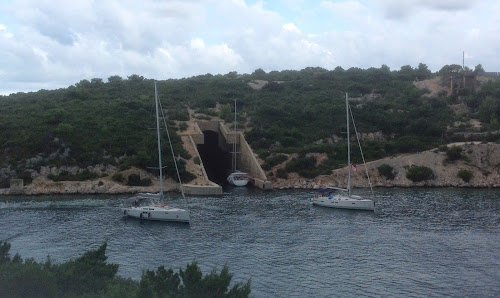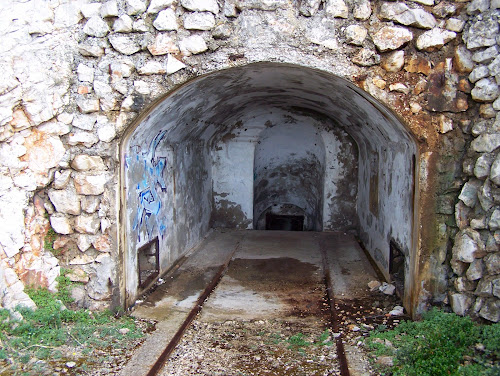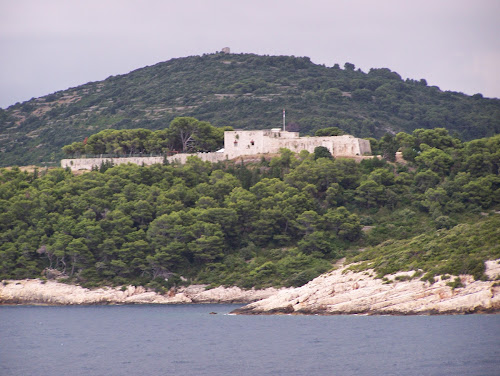Welcome to my blog!
or on Mastodon @balkandave@mastodon.scot, or Threads @davewatson1683
Thursday 31 July 2014
Battle of Harlaw 1411
Tuesday 29 July 2014
The Ottoman Cycle - 2 & 3
It’s difficult to badge this series as its not a conventional swashbuckling historical fiction in the Cornwell mode. The characters are very well developed and the historical research is evident. The second book brilliantly covers the complex machinations of 15th Century Italian politics. Perhaps more importantly, its a great read with lots of twists in the tale and certainly no shortage of action. I particularly like the way the main character develops across the three books. Recommended.
Monday 28 July 2014
Opening of the First World War
Sunday 27 July 2014
Tour around Vis
I outline the history of this island that has such an interesting story because of its strategic position in the Adriatic. Greeks, Romans, Venetian, French, British and Austrian's have all used its natural harbours as a base for their fleets.
They have all left their mark and because the island was a restricted military zone, much of it hasn't been lost to commercial tourism. This is the entrance to Vis Bay, defended by Fort George on the left and Hoste Island in the centre. You get a real feel for the natural bay from this angle.
My tour takes a chronological look at the military history sights.
Plenty for the rest of the family to do as well, with secluded beaches, natural attractions and fine food and wine. The local Pag cheese is particularly good - my suitcase groaned with the amount I brought home!
It's also very good value as a holiday destination.
In wargaming terms, I am adding some British commandos to my 25mm Partisans. Bolt Action will be ideal for the small scale island raids the British forces engaged in. Similar scenarios will work for the Napoleonic period as well.
Saturday 26 July 2014
Yugoslav navy and Vis
The Croatian island of Vis is a good place to see installations of the former Yugoslav National Army (Jugoslavenska Narodna Armija) or JNA, because this was a closed military zone until the breakup of Yugoslavia.
The JNA (technically it's forerunner) was formed in 1941 from partisan units and became the national army after the war. It was organised into four military regions of which Vis came under the Split Naval Region. Of the JNA's 680,000 soldiers, more than 180,000 were conscripts. In 1990, the army overhauled its basic force structure, replacing the divisional infantry organisation with the brigade as the largest operational unit. Twelve infantry divisions converted into twenty-nine tank, mechanised and mountain infantry brigades with integral artillery, air defence and anti-tank regiments.
The Yugoslav Navy included nearly eighty frigates, corvettes, submarines, minesweepers, and missile, torpedo, and patrol boats in the Adriatic Fleet with an establishment of around 10,000 sailors and marines. They developed a submarine-building capability during the 1960s. In 1990, the main combat were three Heroj class submarines armed with 533 mm torpedoes. Two smaller Sava class submarines entered service in the late 1970s, but two Sutjeska-class submarines had been relegated mainly to training missions by 1990. They also had midget submarines.
On Vis, you can visit a submarine pen in a cove near Vis town. We did it as part of a military tour organised through the Paiz Travel Agency. This is the best way to see installations as you need an off road vehicle and a local guide to find everything. Our guide Robert, was very knowledgeable.
The two ports in the island, Viz and Komiza, would have been full of ships during this period, instead of today's private yachts! The navy had ten Osa class missile boats and six Končar class missile boats. Four Vukov Klanac-class coastal minesweepers built on a French design, four British Ham class minesweepers, and six 117-class inshore minesweepers built in domestic shipyards. This was a coastal protection navy, so larger ships were limited to four Soviet Koni class frigates.
Almost every cove on the island has some form of gun battery like this.
There are also more extensive gun positions that you can visit on the tour, like these.
The fleet left Croatia in May 1992, when the navy sailed off Vis island to Montenegro and the JNA was formally dissolved.
Wednesday 23 July 2014
Napoleonic Lissa (Vis)
I am holidaying on the Croatian island of Vis (formerly Lissa). Furthest out of the Adriatic Islands, only 60 miles from Italy, it has been a strategic position throughout history. Originally occupied by the Illyrians, the Greeks founded a colony, then the Romans, Byzantines, Venetians, Austrians and finally Yugoslavia and Croatia.
The British used it as a naval base for their Adriatic fleet in the Napoleonic wars. Vis town is a natural harbour and easily defended with four forts on the surrounding heights and one in the harbour that the Austrians improved when the island was handed back to them.
Three of the forts are simple Martello towers, here is one of them.
The main fort that protects the harbour and a possible landing from a cove along the coast, is Fort St George. It was also improved by the Austrians, but the entrance has the original British markings. A group of locals have formed a trust are repairing the fort at present, taking out the 1950's JNA concrete emplacements. There is a small room with some WW2 items, but I'll cover that in a WW2 blog.
I outlined the history of British involvement in an earlier blog post. The key naval action was the Battle of Lissa 1811, when a small British frigate squadron, defeated a much larger French and Italian force that included 500 troops for an invasion. The battle is covered well here.
The British commander was Sir William Hoste and the small island at the entrance to Vis Bay is named after him. He is also credited with bringing cricket to Vis, a tradition that is maintained to this day.
Tuesday 22 July 2014
Hannibal: Fields of Blood
This is the second of Ben Kane's Hannibal series. He tells the story of the Second Punic War through the lives of a Roman and a Carthaginian family, who become, somewhat unlikely, entwined.
This book takes us through Hannibal's greatest victories in Italy - Lake Trasimene and Cannae. The Carthaginians are commanders of veteran Libyian spearmen who re-eqiuip themselves with Roman gear to great effect. The main Roman character leaves the cavalry and ends up as a Hastati legionary.
Ben Kane is a great story teller and this book is very difficult to put down. I am writing this some 60 miles from the Italian mainland where these battles took place, finishing it in a thunderstorm, not unlike some of those described in the book!
Saturday 19 July 2014
More Game of Thrones
Tuesday 15 July 2014
Game of Thrones and SAGA
A couple of games later just confirmed my view that these are a very clever set of rules that provide a good quick game. Ideal for that army you have always wanted to do, but couldn't quite justify the time and effort to paint up 100+ figures.
Which takes us to Game of Thrones. I love this programme and the fantasy world the author has created. That means I want to game it, but can't really justify Hail Caesar size armies. I was also inspired by the efforts of others, particularly the battle boards created by The Hobbyist's Blog and this great figure painting.
I am starting with the Lannisters and have just finished the first foot figures. The initial plan is a 4 point SAGA army with three 8 man warrior units, bow, spear and sword; plus one hearthguard of knights. All led by Tywin Lannister.
The only purpose made figures I can find are Dark Sword Miniatures. These are a bit large and very expensive, so I intend using them for command figures - Tywin Lannister is 34mm high, foot to eyes. For the rank and file the nearest I can find are GW Lord of the Rings, Warriors of Minas Tirith. I just sanded down the embossed shields. Two boxes of warriors and one of knights is enough.
I have just block painted them quickly using Citadel Khorne Red for the main tunic colour and Balthasar Gold for the bronze armour. Both are a bit bright, but I think look fine once a coat of Army Painter is applied. The transfers are from Veni Vidi Vici (Sheet MM13).
Monday 14 July 2014
Bolt Action: Malaya 1942
I think these are a great set of rules, but I often forget key points because they are in different chapters. So I have produced a full turn sequence, quick reference sheet to help me. I have put a copy on my Balkan Military History web site, in case it's of any use to others.
Back to the action with a classic Malaya scenario. A delaying action on the main road down the peninsular. Two sections of British infantry supported by a 2pdr, HMG and mortar hold a position in a village. The Japanese move down the road with a tank and then try and outflank the position through the jungle. My new 2pdr got off to a good start with a direct hit on the tank with its first shot and it blew up. The British right flank held up but the left didn't and so the Brits tramped off back down the road to Singapore.
Sunday 13 July 2014
Fire Over the Rock
Britain had captured Gibraltar in 1704, during the War of the Austrian Succession and Spain understandably wanted it back. A Britain distracted by the American War of Independence was an opportunity not to be missed and a Spanish and French army started a formal siege. A frontal assault on Gibraltar from the Spanish mainland is a very difficult undertaking. Forts and siege lines were constructed, but no assault was tried during the whole four year siege.
Starving the garrison, led by the resourceful General Sir George Elliot, depended on the Spanish Navy. However, the currents in the channel around Gibraltar meant that enterprising blockade runners managed to avoid them throughout the siege. These supplemented three major relief convoys that fought their way in. The British and Hanoverian garrison of some 6,000 men held out against over 30,000 besiegers.
Interestingly, many in the British military establishment didn't regard Gibraltar as an important asset.They would have preferred to hold onto Minorca. In an age of smoothbore cannon, it was easy enough to get into the Med avoiding interference from the Rock. In the end, it was public opinion that made it difficult for the King and his advisors to negotiate a way out.
Sieges are rarely as interesting a story as battles, but Faulkner does a good job with this epic.
Thursday 10 July 2014
Marius' Mules II: The Belgae
This is historical fiction set in the time of Julius Caesar and in particular the conquest of Gaul. The second in the series deals with the Belgic tribes who Caesar noted were the fiercest of the Gaulish people.
Unlike other historical fiction of this period, Turney tells the story through high command figures, primarily Marcus Falerius Fronto commander of the Tenth Legion. This gives a more strategic feel to the story, albeit with plenty of individual action. Roman commanders led from the front. Or at least they do in fiction!
I found the first in the series a bit slow, but I warmed to this one. The battle action is particularly vivid and I like the way the author deals with the Roman engineering skills. He also gives full credit to the Belgae , not simply writing them off as barbarians. They often showed considerable strategic and tactical skill.
On the subject of historical fiction, the BBC are doing a new drama series based on Bernard Cornwell's Saxon 'Last Kingdom' series. It is inevitably being compared to Game of Thrones. Uhtred will make a great character. I can't wait to see this, but it looks as if I will have to wait until next year!
I start my summer holiday today, so hoping to catch up on some reading, some gaming and a special Balkan holiday trip....

































